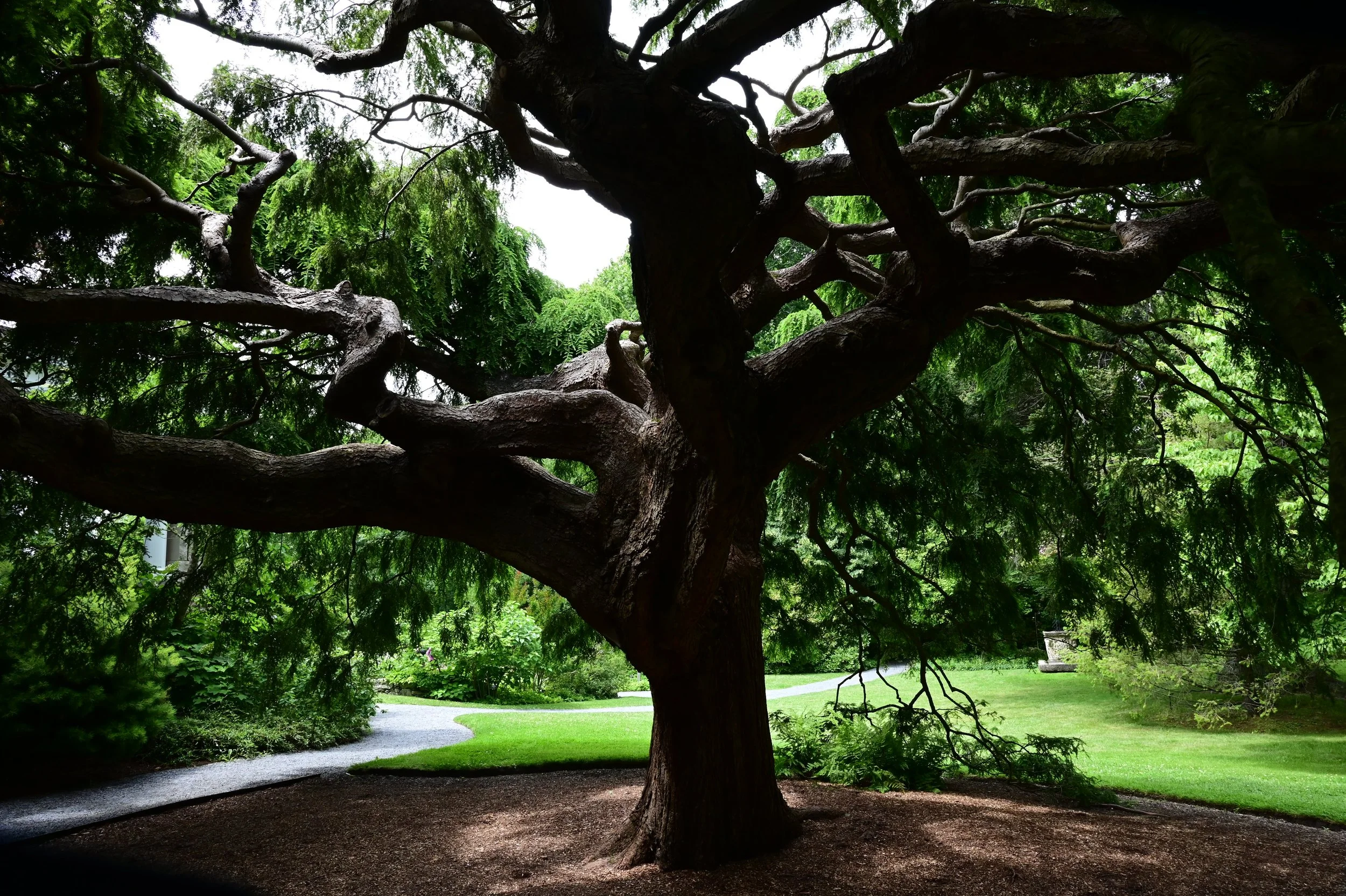Acceptance vs. Surrender
How to Find Harmony in Opposites
I’ve been thinking a lot lately about the words acceptance and surrender. They feel so similar, almost interchangeable—but when you sit with them long enough, their differences become clearer.
To make sense of this, I imagined a tree.
The branches remind me of our beliefs, perspectives, and personal growth—each one reaching outward in its own direction, shaped by life experiences and choices.
The roots, though, feel deeper. They represent the values we share, the trust we build, and the emotional foundation that holds everything steady, even when the branches stretch in opposing ways.
When I think of it this way, it’s easier to see how opposites can coexist—not in conflict, but in a kind of quiet strength.
What Acceptance Really Feels Like
Acceptance is when the tree stops trying to force all its branches to grow the same way. It doesn’t question why one stretches toward the sunlight while another curves toward the shade. It simply allows both to be exactly as they are—different, yet essential to the whole.
It’s a release of tension. A quieting of the mind.
“The wound is the place where the Light enters you.”
Rumi
Acceptance isn’t about giving up; it’s about letting go of the need to fight against what already is.
Surrender Isn’t Giving Up
Surrender goes even deeper. It isn’t about giving in or losing—it’s about releasing the need to control.
Surrender is the part of the tree that stops worrying about how each branch looks or where it bends. It trusts the tree’s wisdom, knowing that growth doesn’t need to be micromanaged.
It’s the moment we stop trying to shape everything around us and instead trust that life has its own rhythm.
“You must learn to let go. Release the stress. You were never in control anyway.”
Steve Maraboli
Surrender is strength. It’s the quiet courage of stepping back, making peace with the unknown, and trusting that the deeper roots will hold steady.
The Magic of Harmony in Differences
The branches of a tree don’t always grow in perfect balance. Some twist together. Some stretch apart. Some even seem tangled or wild.
But the roots? They stay connected.
That’s where the strength lies.
A tree isn’t weakened by its differences—it’s stronger because of them. The tension between branches gives it flexibility. The diversity helps it stand firm against storms.
It’s a reminder that growth doesn’t require perfect agreement. Even in relationships, opposing beliefs or personal differences don’t have to mean disconnection. Sometimes, space allows growth. Distance doesn’t have to mean division.
“Out beyond ideas of wrongdoing and rightdoing, there is a field. I’ll meet you there.”
Rumi
What I’ve Come to Realize
I’ve come to realize that harmony isn’t about convincing everyone to agree. It’s not about forcing a perfect balance or changing how others grow.
Harmony comes from understanding that we can hold space for differences while staying rooted in our own truth.
For me, that means embracing a deeper awareness of other people’s experiences. It means practicing acceptance, even when perspectives feel far from my own. And it means surrendering the need to control—trusting that the roots holding us together are stronger than the distance between us.
“When we are no longer able to change a situation, we are challenged to change ourselves.”
Viktor Frankl
A Final Thought
The next time you feel tension—whether in relationships, personal growth, or life itself—think of the tree. The branches don’t need to match. The roots don’t need to be seen.
They just need to hold steady, allowing space for both acceptance and surrender to do their quiet, powerful work.
Maybe that’s what true harmony really is: trusting the whole tree to stay connected, even when it grows in different directions.
Talk soon…
G



